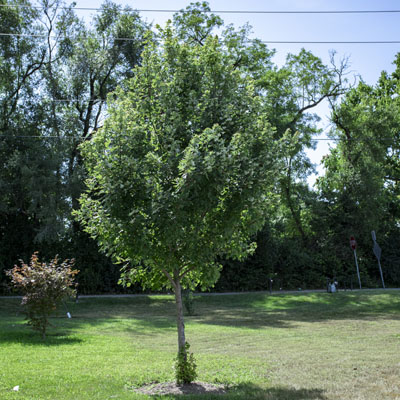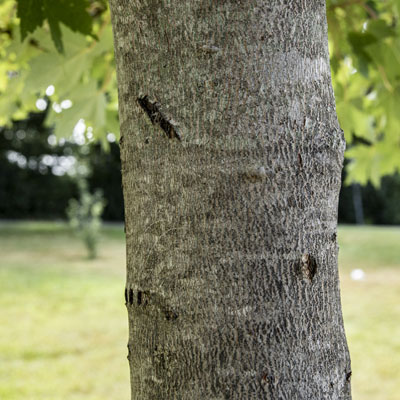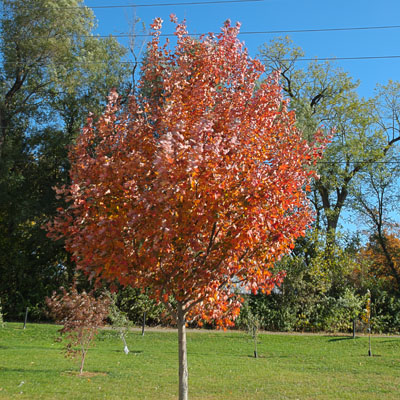Tree Catalog - Best Trees For Dayton, Ohio
Welcome to the Arbor Experts Tree Catalog, where you'll find photos and complete descriptions of the trees we most highly recommend for the Dayton, OH area. All of these trees will do well here and would be a beautiful addition to your yard.
Redpointe Red Maple
Acer rubrum 'Frank Jr.'





Red maples are prized for their fall color and the Redpointe Red Maple is no exception. This cultivar is also valued for its manageable size, tidy branching pattern, and its narrow, pyramid shape. From its early spring flowers to its autumn leaf show, this tree beautifies your garden all year.
Redpointe grows at a moderate rate to 40’ to 50’ tall with a 25’ to 35’ spread. With this narrower spread, the Redpointe maple fits in small gardens and urban spaces, where its crown of dark green leaves provides shade in summer and its brilliant red fall color makes it a focal point, particularly against a clear blue autumn sky.
Striking bark is another plus: young trees have smooth, light gray bark, while mature trees develop darker, plate-like bark.
Characteristics
The Redpointe Red Maple is hardy in USDA zones 4 to 8, making it ideal for Dayton’s zone 6A and helping boost the tree’s natural resistance to environmental stresses.
This maple is resistant to damage by leafhoppers, borers, and spider mites, as well as leaf chlorosis and anthracnose. However, even with resistance built in, you should maintain the environmental conditions preferred by the Redpointe to reduce the chance of these pests damaging your tree.
While this maple cultivar is also resistant to verticillium wilt, ensuring your tree has soil with adequate drainage is the best way to keep this fungus away from your tree.
Adaptability
Redpointe Red Maple adapts to a range of conditions, including:
- acidic to alkaline soil (slightly acidic soil is its ideal, but it is alkaline tolerant)
- clay soils and slower drainage
- summer heat and winter cold
- brief periods of flooding
- proximity to black walnut trees (walnut toxicity resistant)
Growing Tips
Caring for your tree throughout the year ensures its seasonal beauty. You should always mulch around the tree to retain moisture in the soil, use fertilizers for acidic soils, and irrigate as necessary.
Pruning guidelines are the same as for other maples—since sap bleeding is an issue for the species, be sure to prune in winter when the tree is truly dormant or in summer after leaves reach their full size. This will avoid interrupting the early spring sap flow that feeds spring leaf growth, as well as fall sap bleeding before dormancy.
Planting this tough cultivar will reward you with a striking, reliable shade tree with a straight central leader and even branching that adapts to a range of conditions, provides habitat for songbirds and beneficial insect pollinators, and gives you a stunning, early fall display of brilliant red leaves.
